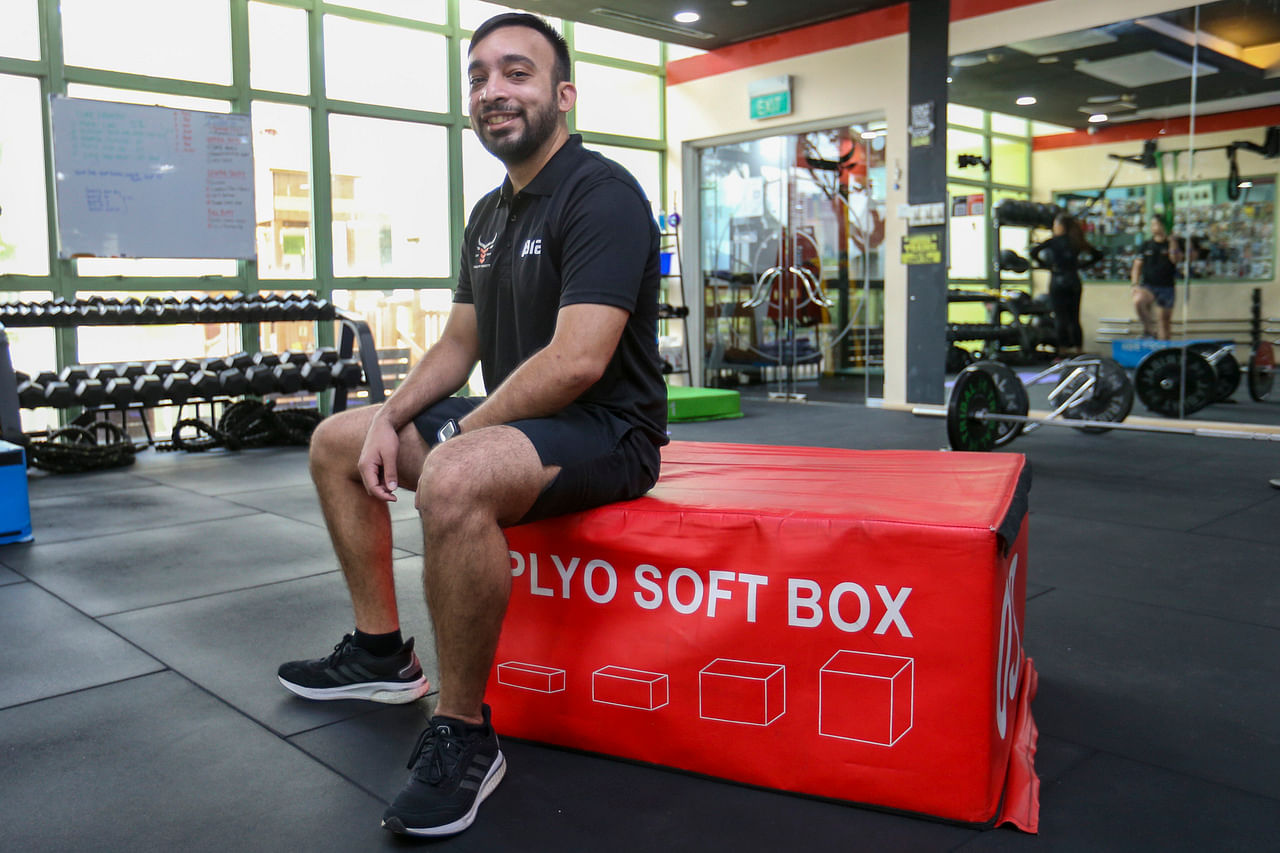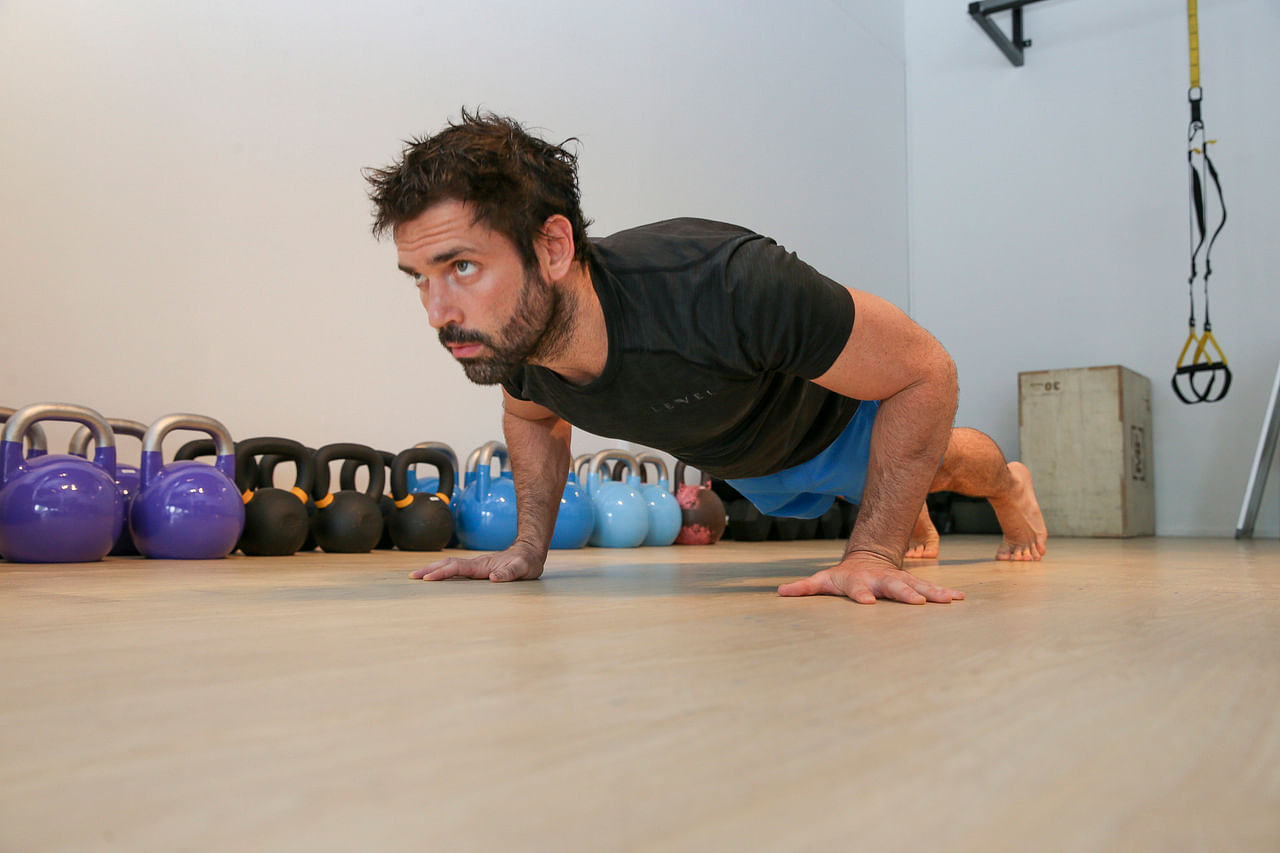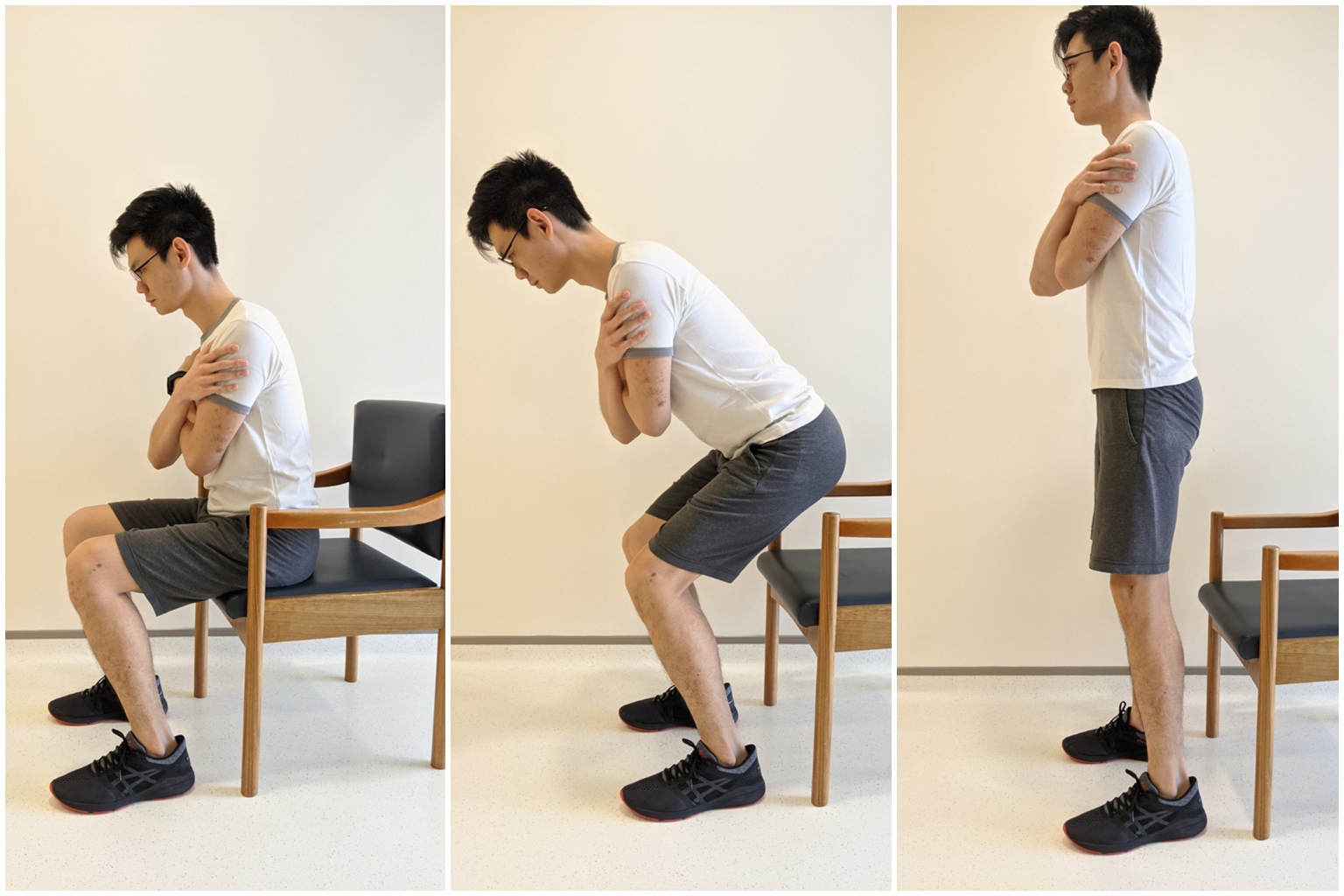Exercising after Covid-19: Don't rush back to your workout routine
Sign up now: Get ST's newsletters delivered to your inbox

Digital forensics investigator Corstiaan Stofregen had recovered from Covid-19 in February 2022.
ST PHOTO: SAMUEL ANG
Follow topic:
SINGAPORE - It has been over a month since digital forensics investigator Corstiaan Stofregen recovered from Covid-19, but he is still struggling to get back his stamina.
The 29-year-old, who is fully vaccinated, tested positive on Feb 13. He had high fever, cough and bodyache and felt fatigued for a week before he tested negative on Feb 19.
Mr Stofregen, who used to exercise three to four times a week, was eager to start working out.
Two weeks after he recovered, he returned to exercising by walking on a treadmill and cycling on a stationary bike, but felt breathless within a minute.
"My heart rate would go up to 170 to 180 beats per minute when it would normally be about 130 beats per minute during simple exercises," he recounts.
He cut the frequency of his workouts and worked with his personal trainer to slow the pace and intensity of his exercise routine.
"I now catch my breath less in between sets of exercises. I'm slowly improving and I'm careful not to push my body too hard," he says.
Administrative manager Madeline Lee, 42, also had to ease back into exercising after recovering from Covid-19 on Feb 28.
A week later, she began jogging and doing exercises such as push-ups and planking, but felt very lethargic and unfit.
Says Ms Lee: "I knew I wasn't ready to exercise because I felt too tired too quickly. So I rested for another 1 1/2 weeks before trying again at a lower intensity."
She took it slow before progressing to higher-intensity exercises like using the skipping rope and climbing stairs.
While people who have recovered from Covid-19 may hope to get back to their fitness routines as soon as they can, experts warn that they should do so at a low intensity before gradually increasing the frequency and intensity of exercise according to their tolerance.
Dr Alan Cheung, a consultant orthopaedic surgeon at the International Orthopaedic Clinic at Mount Elizabeth Novena Hospital, says people with mild Covid-19 should rest for at least two weeks after they have completely recovered before exercising.
"I advise them to start with short-duration and low-intensity exercises, such as brisk walking and stationary cycling, for a week before increasing the length and intensity of training gradually over the next two weeks, until they can resume their usual training activities," he says.
For example, people can do gentle exercises such as walking and light resistance training like leg lifts and knee push-ups for 15 to 30 minutes, for as many as three sessions in the first week, before stepping things up, he says.

Dr Alan Cheung says people with mild Covid-19 should rest for at least two weeks after they have completely recovered before exercising.
PHOTO: UNSPLASH
Dr Shauna Sim, a registrar at the Sports & Exercise Medicine Centre at Khoo Teck Puat Hospital, says those who have recovered from a mild case of Covid-19 can resume exercise slowly after 10 days, if they can complete their daily activities and walk 500m on flat ground in about six minutes without feeling too tired or breathless.
A mild case of Covid-19, in this instance, means no symptoms, or mild symptoms such as loss of smell or taste, headache, runny nose, sore throat, cough and nausea.
Dr Sim says those with such symptoms should start with low- intensity aerobic exercise such as walking, light jogging or cycling on a stationary bike before progressing to more challenging activities like light resistance and body-weight exercises such as half-squats and calf raises.
"If you experience excessive fatigue, muscle soreness or poor sleep quality when returning to exercise, it may be a sign of insufficient recovery and that you are returning to exercise too quickly," says Dr Sim.
In such cases, people should rest for at least 24 hours before resuming exercise at a lower intensity when they feel better, she adds.
Those who experienced moderate to severe symptoms of Covid-19 or are competitive athletes who had mild Covid-19 should seek clearance and advice from a doctor before resuming exercise, says Dr Cheung.
Moderate to severe cases include symptoms such as chest pain, shortness of breath and the need for oxygen supplementation.
Some may not be deemed fit for exercise for up to six months after recovering from Covid-19, based on an assessment by a sports cardiologist and a lung physician, adds Dr Cheung. Others may be required to exercise under supervision.
Regardless of the severity of symptoms, certain groups of people should also seek a doctor's approval before resuming exercise after Covid-19 infection, says Dr Sim.
These include those who are above 65 years old, who were hospitalised or had prolonged symptoms for more than 10 days, and those with heart conditions or underlying medical conditions such as diabetes, high blood pressure and high cholesterol.
As cardiac injury and inflammatory heart disease such as myocarditis have been reported in people with Covid-19, doctors say it is important for recovered patients not to rush into exercise.
Dr Sim says: "People will lose some of their adaptation to training due to isolation and recovery.
"Hence, jumping straight back into their usual exercise routine could put abnormal stress on the heart, respiratory and musculoskeletal system, which can result in injury, cardiac or respiratory complications and even sudden death."
If you develop breathlessness out of proportion from what is expected during exercise, you should stop exercising and seek medical treatment immediately, says Dr Sim.
In addition, if there are signs indicating possible blood clots in the deep veins such as a swollen leg or breathlessness at rest, one should also seek immediate medical treatment.
Mr Lorne Peart, 33, who caught Covid-19 last month, had to lower the intensity of his workout after he recovered.
"I pushed myself too hard two days after I recovered and realised that I had no energy. Then I reduced the volume of exercise and was a bit more generous with the rest time," says the Briton, a movement teacher at the Level Singapore gym.

Mr Lorne Peart had to lower the intensity of his workout after he recovered from Covid-19. ST PHOTO: SAMUEL ANG
PHOTO: ST
Some of his students, he says, felt "totally fine" a day after testing negative for Covid-19, and resumed training the same way before they had Covid-19, he says.
As for Mr Peart, he still notices improvements in how he feels during training each week.
"After a month, it still feels like my cardio isn't quite what it once was, but it does improve each week. I'm using this time to work on my technique in some skill work, and not think about hitting new personal best records," he says.
Dr Cheung says the speed of recovery will vary and it may take months for some to recover to pre-Covid-19 levels of fitness."The key is to return to sports slowly and gradually. If you have any doubts, or have any symptoms when exercising, speak to a sports doctor," he says.
Simple routines after Covid-19
Hoping to start working out again after recovering from Covid-19?
You can follow this guide to ease back into exercise by physiotherapists at Khoo Teck Puat Hospital's Department of Rehabilitation Services. However, physiotherapists warn that each person will experience different symptoms and some may require a more tailored rehabilitation programme.
Heel raises

1. Stand behind a chair and place both hands on the chair for support.
2. Tiptoe on both legs and ensure that your ankles are not twisted. Hold for three to five seconds.
3. Repeat 10 to 15 times for two to three sets.
4. Progress to removing the chair or holding weights by the side of your body.
Walking

1. Start walking for 15 to 20 minutes at your usual pace. If you feel comfortable, step it up to 30 minutes at a slightly faster pace.
2. Aim for a total of 80 to 100 minutes of walking a week and gradually increase to 150 minutes a week.
Half squats

1. Stand with your feet shoulder width apart.
2. Extend your arms straight in front of you.
3. Bend your legs and push your bottom back to a 45-degree angle.
4. Slowly return to your original position.
5. Repeat 10 to 15 times for two to three sets.
Inclined push-ups
1. Go into an inclined position using a firm surface like a table or a horizontal bar as support.
2. Lower your body while keeping a straight back.
3. Repeat 10 to 15 times for two to three sets.
4. Progress to performing the exercise at different heights by using a table or stool.
Sit-to-stand exercise

1. Sit on a chair, then stand up.
2. Return to sitting position.
3. Repeat 10 to 15 times for two to three sets.
4. When you feel stronger, you can do a squat exercise.

